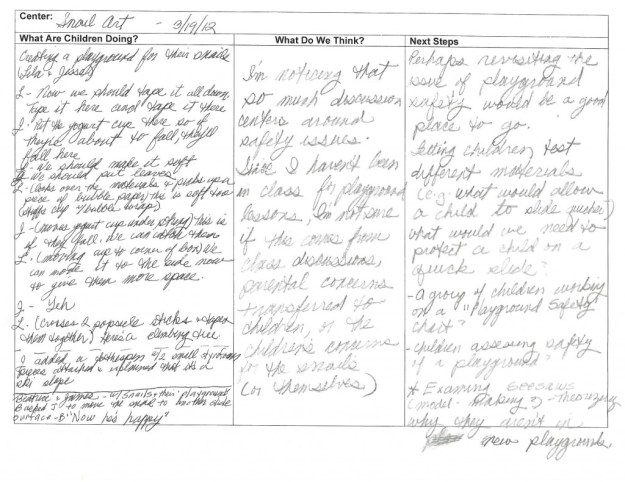Shelly Kee, Shelly Kee Bookey
Put out all your horns,
All the ladies are coming to see you*
*Irish children’s chant – you can hear it on iTunes: http://itunes.apple.com/us/album/so-early-in-morning-irish/id162653706
(you can hear the chant if you click on the link and then click on Shelly Kee Bookey!)
All children seem to love playgrounds. They don’t need instruction on what to do with climbing bars, swings, a sandbox or a crawling tunnel. They run right off to play.
It’s not unusual to see children become fascinated with a ladybug crawling across a branch, an ant working its way over a fence or a caterpillar inching itself through the grass.
Children are naturally curious and full of energy.
So what happens in a kindergarten class where children who are studying playgrounds are introduced to a tankful of snails in their science center?
A playground for the snails!
Of course this magical combination of a snail study and playground study needs some special conditions to allow this idea to take shape. It needs children who have had opportunities to visit and play in many playgrounds. These children need to have had the time and encouragement to freely observe and explore snails in their science center. There should have been many experiences for children to use their imagination as they worked with a variety of open-ended art materials. AND, quite importantly, there needs to be a teacher who values exploration, inquiry, play and imagination.
You will find all of these ingredients in Bill Fulbrecht’s kindergarten class at P.S. 321 in Brooklyn, New York.
When I visited during Choice Time this week, the children were in the midst of the playground study that began even before the start of the school year. During the summer Bill sent out a letter letting the children know that they were all going to become playground experts that year! He encouraged the children to bring in, on their first day of school, drawings and pictures of playgrounds. The seed for the study was planted!
Over the course of the last few months the class has taken many trips to playgrounds both in the neighborhood, in Prospect Park, and around the city. They periodically walk to a nearby site to observe the development of a new playground being built. A few weeks ago they interviewed the playground designer. A notebook is passed from family to family. Parents write and draw sketches of their personal memories of going to playgrounds when they were children. These stories are shared in class.
This winter, Bill brought in some snails for the science center. The children conducted all sorts of “snail experiments”. They discovered what snails like to eat, how quickly they move, and, of course, how to care for them. At the art center, we noticed children twisting paper to make snails. They used the digital microscope in the science center to create snail movies.
And then it happened.
Someone came up with the idea of making a playground for the snails. The idea delighted the class and Mr. Bill flew with it. He suggested that they begin collecting boxes and other materials so that they could start the project.
They began by painting the boxes that would become the foundations for their playgrounds.
Children worked in partnerships to draw plans for a snail playground and they shared these drawings with each other.
Then, during Choice Time, children signed up to begin constructing the playgrounds with their partners. When the playgrounds were completed, they signed up for taking turns to bring the playgrounds to the science center so that they could let the snails try out the equipment!
This project is still in progress. Yesterday when I visited the class, I recorded some of my observations as I watched two children at the art center and two at the science center. Later, when I left the class, I looked over my observations and jotted down some thoughts about them and some possible next steps. I noticed that all four of the children seemed particularly focused on issues of safety. Snail safety? Playground safety? I’m not quite sure from my one observation. I’ll share my notes with Bill and get his ‘take’ on this.
It’s so gratifying to see children traveling through this study at a snail’s pace…exploring, creating, collaborating, improvising and having a wonderful time.








